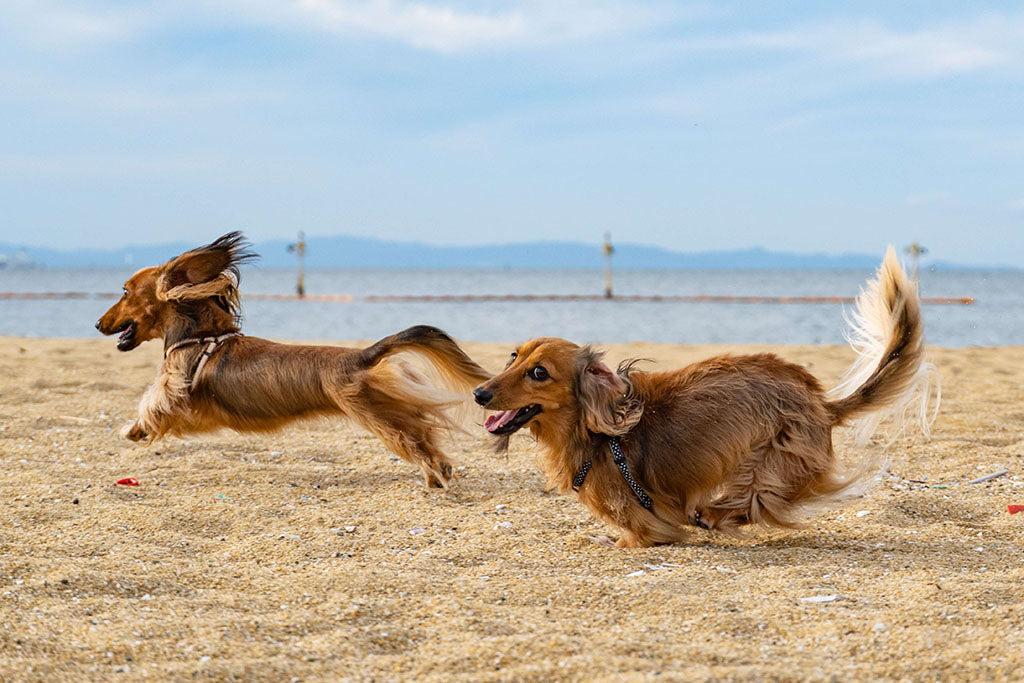In this blog, we learn all about dog zoomies. We’ll find out what a case of the zoomies is, how they come about and we’ll discover why dogs get the zoomies and how to help distract them from a zoomie episode too…
Why Do Dogs Get ‘The Zoomies’?

If you’ve ever witnessed your dog tear around the house after a bath or returning home from a veterinarian appointment, you probably know that these bursts of energy are called “the zoomies”. But, why do dogs get the zoomies? Where do they come and what causes this comical need to suddenly zoom around in circles? It’s time to learn about dog zoomies!
What Are Dog Zoomies?
The zoomies’ technical name is – Frenetic Random Activity Period (FRAP). From this we can decipher that an episode of the zoomies is defined as a random, sudden burst of energy emitted from a dog that doesn’t last too long; usually only a few minutes. The zoomies cause a dog to perform frantic, repetitive behavior (often running around in a circle, sprinting around with their back end tucked, or spinning). But, why?
The zoomies often occur when dogs become “revved up”. The trigger for this excitement will vary between dogs and can sometimes be influenced by the time of day too. It may be when their favorite person arrives home, it may be after having a bath, it may be going out in the wind or the snow, or being released from their crate/another form of restraint. No matter what the trigger is for your dog, rest assured that a case of the occasional zoomies is normal!
Zoomies occur more often in puppies and some dogs will grow out of them completely too.

Aggressive Puppy Zoomies
If your dog or puppy gets a little aggressive during their zoomies – perhaps they nip with their teeth – it’s advisable to try and redirect their energy instead of punishing them. Try and distract them by playing with their favorite toy to help refocus their energy.
If they get a case of the zoomies in an unsafe area – perhaps near a road – try running away from them so they chase you to a safer location or throw their favorite toy or treat in the desired, safer direction.
Whatever you do, it’s not advisable to chase a dog with the zoomies. This will just spur on their excitement and slow your dog from settling.
Managing Dog Zoomies
There’s no way of stopping the zoomies when they happen, you just need to support your dog in containing them safely. So, when they get the zoomies make sure they have space so they don’t injure themselves and they’re redirected away from hazards with their toys or other suitable distractions, like treats.
However, if you’re looking to help reduce the frequency of these zoomies, the best way is by ensuring that they have enough mental stimulation, play, and are being walked and exercised adequately according to their breed’s size, their age, and individual needs.
If you’re unsure how much exercise your dog needs, consult with your vet and use our handy PetLab Co. guide for adult dogs for reference below:

PetLab Co. Pro Tip: Often, if a dog chases their tail compulsively this can be a sign of emotional distress but is often confused with and thought to be “the zoomies”. If your dog chases their tail regularly throughout the day and in a seemingly compulsive manner, it’s advisable to have them checked over by their vet.
Sources
Author London, Karen B. Ph.D. “7 Things To Know About Dog Zoomies” The Wildest, Jun 01. 2021 https://www.thewildest.com/dog-behavior/7-things-know-about-dog-zoomies
“How To Manage Dog Zoomies”, Pethood, Petplan https://www.petplan.co.uk/pet-information/dog/advice/zoomies/
 S
S



